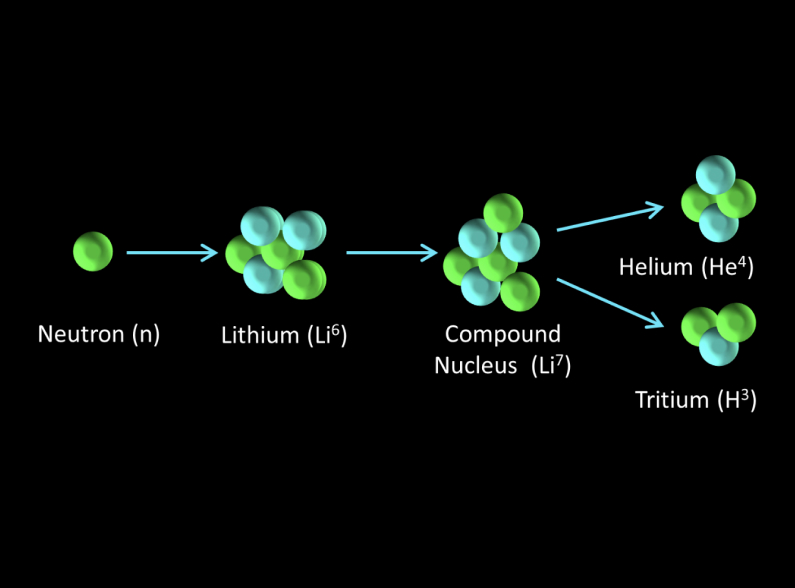Credit Steven B. Krivit
Tritium is a key component in most fusion research projects, with a significant portion of its limited availability earmarked for the International Thermonuclear Experimental Reactor (ITER) initiative. The process of generating tritium, which involves targeting Lithium-6 with neutrons, might appear simple in theory, yet it is fraught with numerous technical hurdles in practice. Currently, we do not know of any endeavors specifically aimed at producing tritium in quantities sufficient to sustain both experimental and future operational reactors. This seems to be a critical bottleneck that can negatively affect the public availability of fusion energy.
Applying a neutron beam to lithium results in nuclear reactions that can produce tritium, an isotope of hydrogen, among other products. The specific reactions depend on the isotope of lithium (either Lithium-6 or Lithium-7, which are the two stable isotopes of lithium) and the energy of the neutrons.
Neutron Interaction with Lithium-6:
When Lithium-6 (⁶Li) absorbs a neutron, it undergoes a nuclear reaction that produces tritium (³H) and helium-4 (⁴He). The reaction can be represented as follows:
⁶Li+n→³H+⁴He
⁶Li+n→³H+⁴He
This reaction is exothermic, releasing energy in the form of kinetic energy of the reaction products.
Neutron Interaction with Lithium-7:
When Lithium-7 (⁷Li) interacts with a neutron, especially a fast neutron, it can also produce tritium, but the reaction is different and less likely compared to Lithium-6. The reaction with Lithium-7 usually produces helium-4, a neutron, and tritium:
⁷Li+n→⁴He+³H+n
⁷Li+n→⁴He+³H+n
This reaction is less direct and less efficient for tritium production compared to the Lithium-6 reaction.
These reactions are particularly significant in the context of nuclear fusion, especially in fusion reactor designs that use deuterium-tritium fuel. In these reactors, Lithium is often used in the surrounding blanket material to absorb the high-energy neutrons produced during fusion reactions, thereby breeding Tritium, which is then used as fuel in the fusion process. This method is crucial for sustaining the fusion reaction, as natural tritium is scarce and must be replenished.
Additionally, the interaction of neutrons with lithium is also utilized in certain types of nuclear batteries, known as betavoltaics, where the beta particles (electrons) emitted during the decay of tritium are used to generate electrical power.

